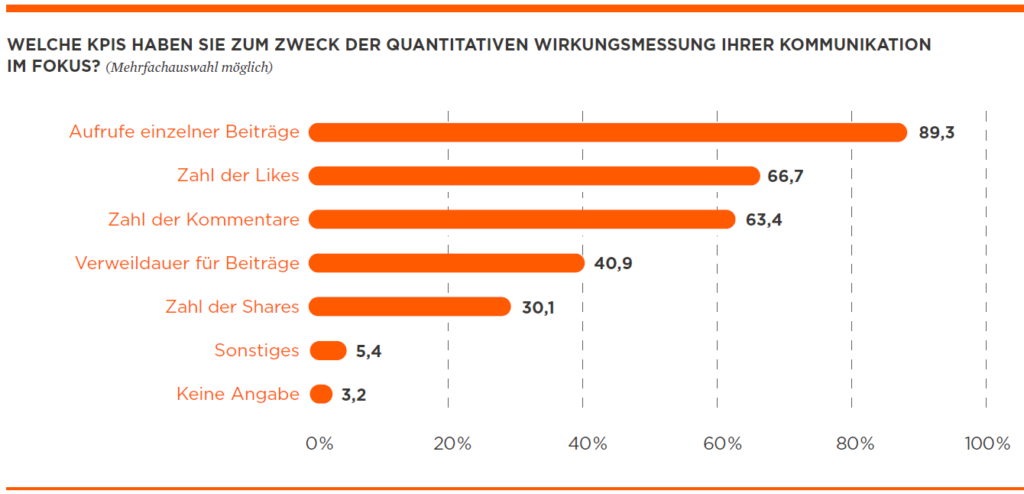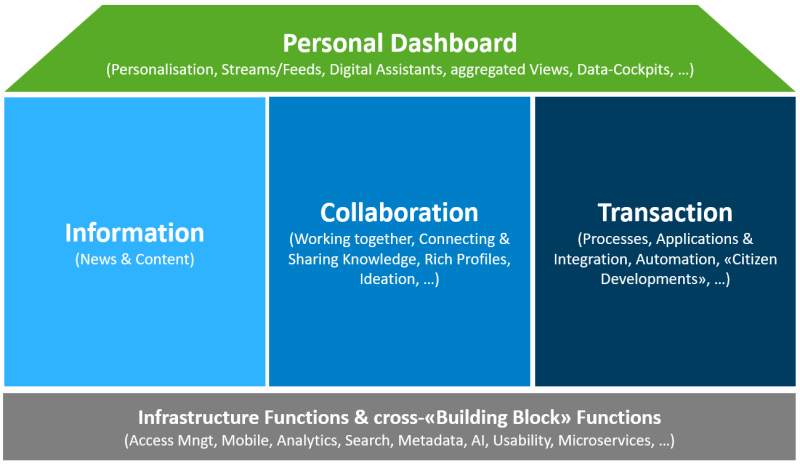In Dialogue: The Need for Integrated Internal Communication
Published January 26, 2022 by Stephan Schillerwein
This is the first post in the new series “In Dialogue”. This series pursues the goal of mastering complexity by bringing together more complementary perspectives in the big, wide world of the Digital Transformation of Work (“Digital Work”).
This first dialog took place with the two founders of the communications agency Brisk Match, Daniela Glässer and Denise Remund, on the topic of the still existing divide between digital and analog internal communications.

[This article was translated using automated translation software – sorry for any errors or lack of proper style]
In many places the great divide between classic – i.e. analog – and digital Internet communication (IC) can still be felt. And that despite the fact, that it has already been more than two decades since digital communication channels found their way into corporate communications (if we start counting with the emergence of Intranets in organizations). It is therefore all the more surprising that in many companies there is still a strict separation between classic and digital IC, both in terms of personnel and function. And not to mention the completely different mindsets.
Stephan:
I’ve been involved with digital communications for so long that I find it hard to believe that even in the third decade of the 21st century, you still come across companies where classic and digital communications are treated as somehow connected but ultimately separate areas. You are also professionals in the field of digital communication, but you bring a very different background than I do. What does this look like and how do you experience the situation in IC?
Daniela:
We both have over ten years of professional experience in corporate communications and during this time have been able to accompany and implement various communications projects in a wide range of industries and companies. We have also experienced and helped shape digitization in IC – and experienced it very similarly to you: there is often a big break between analog and digital communication.
The Story is at the Center
Stephan:
If you think about how this rift might have come about, there are of course countless reasons and explanations. But it seems to me that the more relevant question is why these rifts have persisted in many places to this day. I often experience a strong fixation on channels and a strong sender orientation. So, instead of aligning communication with its recipients, people focus on channels and tools that are available. Of course channels are needed – but the question is what role they should take. And what should be the focus if it’s not the channels?
Denise:
That’s an exciting question and absolutely crucial when it comes to the direction of IC. Communication should always be storytelling. People who take care of IC in a company need to see themselves as storytellers. They publish content such as information about the company, an exciting background article about a product, or an interview with an employee. And it is precisely this content that they must package into a story – and publish on the channels that are available to them. Regardless of whether it’s analog or digital.
Daniela:
The keyword here clearly is integrated (internal) communication.
Stephan:
That’s a very central point. The story is the end and the channels are merely the means to an end. That’s a far-reaching, but actually also quite simple insight. However, when I look at the results of the SCM Trendmonitor «Digitale IK 2021» and see that only just under 9 percent of all companies are using multimedia stories, it seems that this has not yet really arrived in practice.

Source and Copyright: SCM – School for Communication and Management und MPM Corporate Communication Solutions, “Trendmonitor digitale IK 2021: Content, Performance und Kanäle”, 01-2021, S. 21, Abb. 18
Stephan:
Why do communications departments have such a hard time with this? And do you perhaps have an example of what playing a multimedia and cross-channel story might look like in concrete terms?
Daniela:
This is possibly a result of the rapid technical development in recent years. Communications departments could certainly benefit from this, but perhaps they were also a bit overrun, even overwhelmed, in some cases. The constantly growing range of possibilities – of new, even faster, even more creative, even more interactive communication channels – is enormous. But what do you bet on? A new employee app, an in-house podcast, or a social intranet that can also be used for collaboration? The focus here is always on channels. You discuss channels, finally introduce a new channel, and then take care of its implementation, acceptance among employees and managers, establishment, and so on. The focus is on the means of communication – and not on the stories you actually want to share.
Denise:
That’s probably the crux of the matter. And from my experience, companies also miss the moment every now and then to analyze their own ICT landscape. What do we need? What are the advantages and disadvantages or the purpose of the individual channels? The findings should then definitely be incorporated into an IC strategy. And this strategy should primarily focus on content – and not on channels. It’s about deciding what you want to talk about. And the use of the channels should only be discussed in a second step.
IC strategy shows added value
Stephan:
This brings us to fundamental issues such as the IC’s self-image and the goals that guide and steer the IC. Let’s look at it in black and white: Does such an approach have any realistic chance at all in a company where the IC is simply the mouthpiece of the management and is evaluated by the number of clicks it can generate for a news item?
Denise:
We’re sure that this is possible. Once you understand the purpose of IC, there is no way around a strategic approach. After all, a good, well thought-out communications strategy definitely has an impact on the reach of messages and thus also on clicks – and should therefore also be in the interests of the company and its management. The challenge for those responsible for IC is to make this clear to the management.
Stephan:
To stay briefly with the clicks: Both my own observations and the study already mentioned show that success measurement and control are not in good shape in most companies. In the SCM study, almost 40 percent of the organizations surveyed have no tool at all for measuring success, and around a quarter only measure quantitatively. This means that around four out of ten companies are flying blind and around two to three out of ten companies can only make statements about usage. The perception, impact and benefits of IC are really known in no more than three out of ten companies.
And that’s only in an ideal world, if we assume that the right things are being measured there and that the right decisions are being made on this basis. These are frightening figures, especially from the perspective of digital transformation. Is IC afraid of transparency in regard to its own performace because it is secretly unsure of its added value?
Daniela:
A provocative, but entirely valid question. We know ourselves what it’s like to justify the communications department and its budget to management or the CEO/CFO. Show a finance committee in a large company what the ROI of a new intranet is – that’s not easy. For many other parts of the company, especially sales or customer care, the purpose of the communications department is not clear. For them, we are cost units that do not generate any (obvious) revenue. This is probably why the topic of key figures in (internal) communications is often a red rag. From our point of view, however, it is precisely for this reason that it is all the more important for corporate communications to define relevant key figures for itself – and this brings us back to the IC strategy, by the way – and to measure it regularly and also to disseminate and disclose them within the company.
This is the only way to create acceptance and attention, even the raison d’être of IC. The fact that many organizations do not (yet) do this is probably due to the fact that measurement is not that easy. We don’t have a number of calls that we can relate to the number of products sold (like in a Sales department, for example).
Enablers of Corporate Culture
Stephan:
Let’s get back to our main topic, the gap between analog and digital IC. For me, the problem starts right here: As long as we talk about classic and digital IC at all, we are still far from the goal.
The term “digital IC” reduces the entire IC to digital channels, systems and instruments. And it is much more about orientation, attitudes and approaches. These are not limited to the topic of “digital”, but encompass a whole bouquet of approaches that should all be part of the new, integrated IC. I’m thinking of approaches like agile methods, design thinking, participative leadership, lean, new work, customer journey and so on. All of these are as much a part of the IC toolbox needed to shape the future as ia digitalization.
Denise:
We agree. It’s not about digital or analog, it’s about guaranteeing the best possible, strategic IC with the best possible reach and a desired effect. Companies should therefore focus and prioritize on stories and messages. And for spreading, the bouquet you mentioned should be used.
Daniela:
A variation of methods is also becoming increasingly important, because the days when IC was limited to communicating company news and product information are over. One of the most important tasks for us communicators is to accompany employees on new paths and empower them to explore new ways of doing things. This includes, among other things, educating them on topics such as New Work with new ways of working or new management methods. It is essential that IC plays a pioneering role. If you only report on trends or new methods and have not tried them out yourself and experienced them first-hand, you will not appear authentic in your communications. Those who view IC as an integrated approach do not simply pass on corporate information top-down, but rather see themselves as enablers and shapers of the corporate culture.
IC and the Digital Workplace
Stephan:
This perspective seems to me to be fundamentally important. To come back briefly to the tools – I know that many people are interested in this, but at the same time there is still a lot of confusion, often even about all the terms that exist in this area. If a company has an outdated intranet and is now thinking about modernizing it into a social intranet – where do we stand in the light of the discussion so far? In my opinion, then we are still stuck with the sender orientation and have not yet thought about what the employees in our company actually need. Because these needs are always much broader and more far-reaching than a social intranet could ever be. What I would like to address is the Digital Workplace. However, many communications departments have a hard time with the digital workplace, because the focus of a digital workplace is largely no longer on communication, but on topics such as collaboration, knowledge management, process optimization, work organization, and so on.

Source: Stephan Schillerwein, 2021 (v3.4), Licensed under a Creative Commons “Attribution-ShareAlike 4.0 International” License, https://creativecommons.org/licenses/by-sa/4.0/
Stephan:
Why should IC engage with the Digital Workplace nevertheless and what benefits could they be looking for?
Denise:
We know this discussion very well from our own experience. As communication managers, the introduction of a tool often focuses on the breadth of new functionalities. We want to promote the exchange with our employees and need a dialog-oriented channel for this. But as mentioned earlier, that’s not what it should be about. We should open our view further and look at communication in a larger context.
Just to give an example: If we introduce a new tool for digital collaboration – such as MS Teams – this is not primarily a classic communication channel, but with the introduction we promote the “digital mindset” of the employees and reach even more employees than we might do with our pure communication tools. After all, the Digital Workplace is used for daily work, whether it’s for collaborating on a document, keeping up with product news, or sending short messages. So why shouldn’t the IC also communicate where the employees are? On the one hand, this is more practical for them and, of course, it also has a positive impact on the reach of the communication measures. A win-win situation.
Next stop: Digital Employee Experience
Stephan:
The importance of taking this holistic approach is also demonstrated by other developments in this area. When a company starts to look at employee experience, it goes a big step further than the digital workplace.
What is “Digital Employee Experience (DEX)”?
“Digital employee experience (#DEX) is the sum total of
the digital interactions within the work environment.”
Source: James Robertson, Step Two Designs Pty Ltd
What would you say: is the conscious design of the employee experience in IC already a topic at all? And what would be good examples of specific entry points into this topic from your perspective?
Denise:
That’s a very good point, and one that we think is still a bit under-addressed today. As you say, just like the Customer Journey, there is also an Employee Journey. In IC, you should definitely look at this and ask yourself where the touchpoints with the company are on this journey. And that’s where you should start. But what is needed for this is close cross-departmental collaboration with HR and IT – and that is probably what is often lacking. After all, consciously designing the employee experience starts with recruiting (HR), continues with setting up the infrastructure on the first day of work (IT), and extends all the way to the employee kickoff annual meeting (corporate communications). As an entry point, we recommend working with HR and IT to record the Employee Journey and define the touchpoints with the company. The next step is to analyze and adapt the contact points in relation to the IC. We are also convinced that this approach can make another big difference in terms of the effectiveness and reach of employee communications.
IC as a living Role Model
Stephan:
To conclude our conversation, I would like to put forward a thesis. My conclusion would be this: The Employee Experience is going to be a critical survival switch for the IC. So either IC is significantly involved in shaping the future employee experience or it will not only lose importance in the medium to long term, but probably even the “raison d’être”. Or to put it positively: There is an opportunity here to become a significant contributor to the company’s future. In my view, that would be the most exciting task of all! How do you see it? And what would be your final recommendations to communications managers?
Daniela:
I can definitely agree with this positive formulation of your thesis. The IC should become aware of its important role in the company and open up its perspective. Whoever manages to do so expands their field of activity from classic/digital communication to a culture changer who, through the telling of their stories and the placement of their messages, plays a decisive role in shaping the future of a company. And that, after all, should be the goal of IC. What I would also like to emphasize is the importance of communication controlling. Only those who measure their implemented activities on the basis of defined key figures can ensure effective IC and make adjustments where necessary. If you don’t do this, you are not working in an agile way – and you are not exemplifying a new-work-oriented way of working. And who would believe the words of a communications department that only preaches a modern, innovative and New Work-oriented way of working as the future of the company? No one. And that’s exactly what matters.
This article is also available for download in three parts as a PDF on the Brisk Match blog – in German only:


